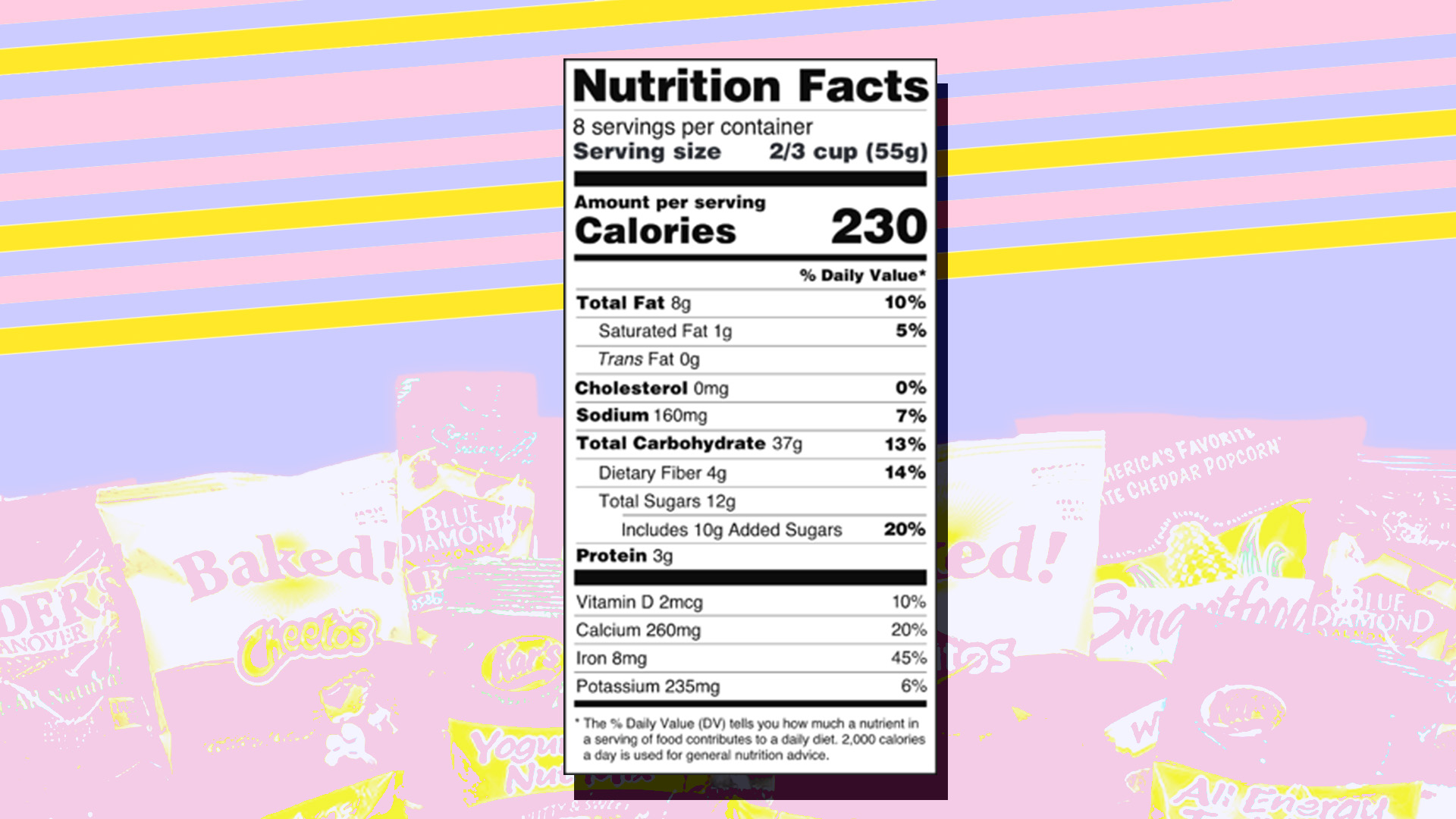Everyone loves a good snack – potato chips and dips, salted egg fish skins, endless amounts of Mamee Monster packets, and the list goes on! The phrase ‘treat yo’self’ has become a norm, followed by somewhat instant regret after the calories sink in.

Recently, there has also been a trend in wanting to eat healthier, or at least knowing what goes into the delicious snacks that we consume. The easiest way to find out, is through the nutritional labels on the snack. In fact, reading the nutritional labels correctly is the first step to a healthier diet.
A nutrition label usually provides information on:
- Energy value per serving and per 100g/100ml – presented in kcal, kJ or both
- Amounts of protein, carbohydrate and fat – presented in g
- Amounts of any other nutrients mentioned in a nutrition or health claim – presented in g
Manufacturers often use less common names for ingredients – which might throw us off a little. Salt is presented as sodium chloride, sugar is maltose or fructose, and consumers just get confused. Claims such as ‘low cholesterol’ or ‘no added sugar’ are always highlighted, but newsflash – that doesn’t mean it’s healthy.
It’s completely fine to be confused by all these terms and measures. With a little help from various resources online, here’s how you can read and understand nutrition labels:
Servings per package
As the heading suggests, it’s the number of servings in a single container or packet. Don’t get it twisted though, as there could very well be more than one serving per package.
Serving size
This varies from product to product, and really depends on the manufacturer. A single serving might be (or is definitely) less than what you would typically consume.
For example, a packet of your favourite salted egg fish skin may contain 120 calories per a 30g serving, and contain 10 servings. If you binge on a whole packet, that’s 1,200 calories wasted on something that will probably give you a bad stomachache at the end of the day. Yikes!
Comparing values
Look at the ‘per 100g’ or ‘per 100ml’ information instead of the serving size. This gives you a better base of comparison when choosing between items.
Nutritional data

This really depends on what you’re doing with your personal diet. Of course, all the information is readily available on the label itself – so you should focus on those that are important to you.
- On a diet? Look at the serving size, energy or fat content. The serving size helps you decide how much to consume while the energy and fat content helps you select a lower calorie product.
- Struggling with high blood pressure – check the sodium value.
- Trying to control your cholesterol intake? Focus on the saturated fat and cholesterol amounts.
- If you are diabetic, the carbohydrate and fibre values are important as these nutrients have a greater effect on blood sugar levels.
If you are still confused and don’t trust yourself to make the healthier call, look out for Health Promotion Board’s Healthier Choice Symbols! They’ve done all the research there is to know about the product’s ingredients, and are guaranteed to be healthier than others.
Products with HPB’s Healthier Choice Symbols are usually lower in fat, saturated fat, sugar and sodium. There are also products which are higher in whole-grains, dietary fibre and calcium as compared to similar products within the same category.
With all the information right at your fingertips, it’s your time to make better and healthier decisions for yourself and your loved ones.


